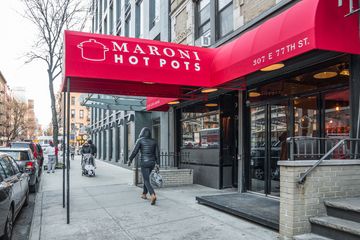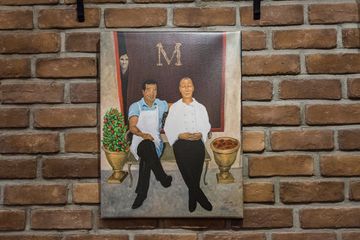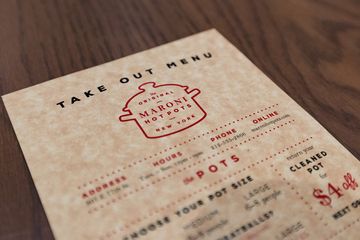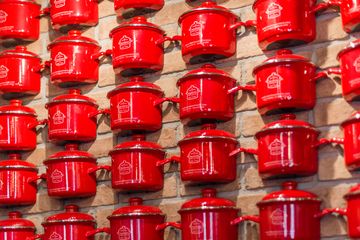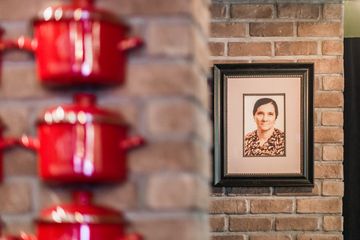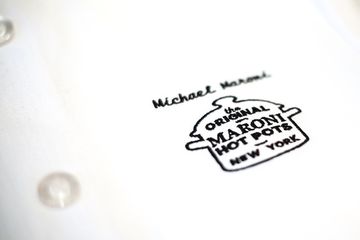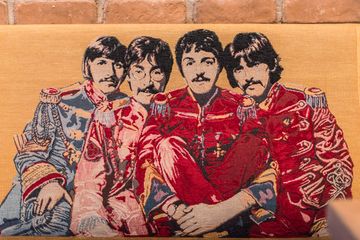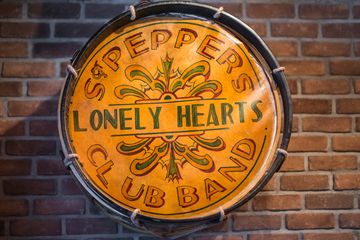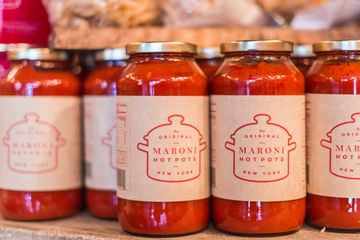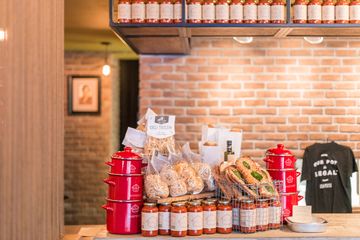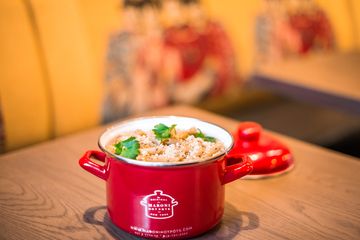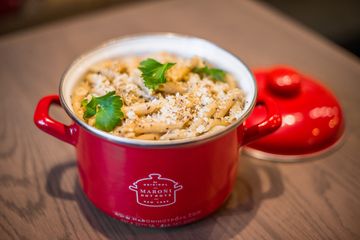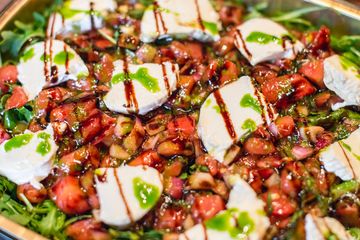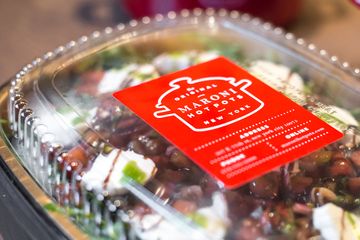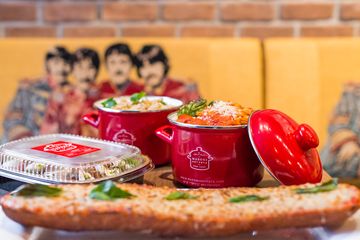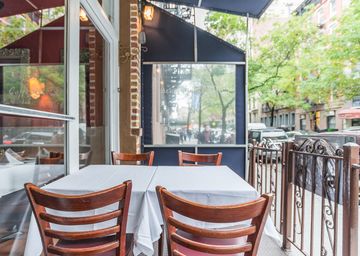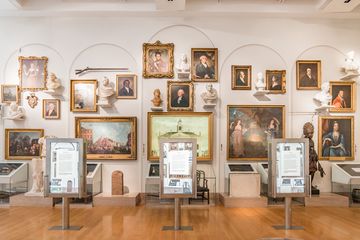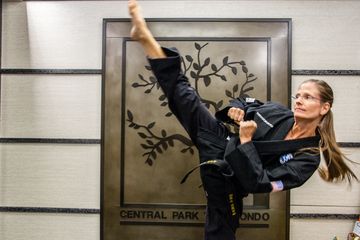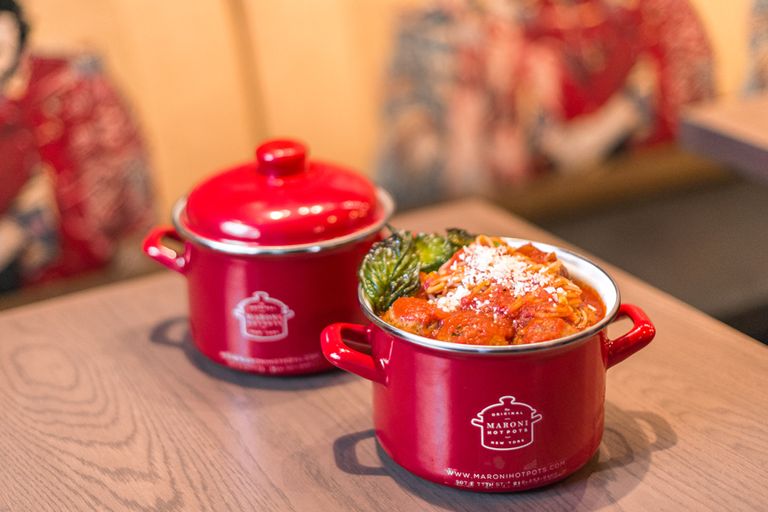
Upon meeting Maria and Michael Maroni, the owners of Maroni Hot Pots on the Upper East Side and Maroni Cuisine in Northport, Long Island, I understood why their first outpost had proven so popular. The food, of course, is sensational, but in addition, the two owners are incredibly welcoming, friendly, and warm. We immediately felt like a part of the Maroni clan.
While Maroni Cuisine is a full-fledged restaurant, Maroni Hot Pots here on 77th was designed with a primary focus on delivery and take-away. There is a small dining area decorated with pictures of the Beatles and classic rock-inspired art painted by Gregori Oleanik, a friend and customer from Northport. Mike was inspired to create the Hot Pot concept from childhood memories of his grandmother, who would give him and his father a home cooked meal in a pot to take home with them when they stopped by to visit her on Sundays.
Maria sat down with me while Mike whipped up a couple of pots for us to try. She spoke of Mire Poix, the couple’s first restaurant, which opened on Long Island in 1995. It was a fancy, high-end dining concept. In 2001, the couple opened Maroni Cuisine, preferring to try something a bit less formal. It is there that Mike put his own spin on Italian classics using his Neapolitan grandmother’s amazing 100-year-old meatball recipe. “Everyone thinks their nonna makes the best meatballs, but mine actually did,” Mike chimed in.
When the time came to expand, Maria told me that the Upper East Side made the most sense. Many of their Long Island customers have connections to this neighborhood, and, serendipitously, so did they. Maria shared with us a strange coincidence surrounding their building on 77th Street. They leased the space without knowing that it used to be home to the barber shop where Maria’s father would get his hair cut. When construction was underway on the restaurant, they even found mirrors hidden in the walls from the old business.
As our fascinating, warm conversation continued, Michael brought out their signature steaming red Hot Pots, smelling a bit like Italian heaven, and joined us. Everything comes hot and ready to eat when delivered to one's door or if someone is picking up an order. Meals can also be reheated in the oven or on the stovetop using the reheating instructions that come with every order. A main element that sets Maroni Hot Pots above other delivery and take-out places is that customers are encouraged to hold onto the pots. If they return the vessel to Maroni, they receive credit towards their next Hot Pot, but it is not required. The pots, Maria explained, are designed to keep the food piping hot for a long time. “Though it’s even better cold the next day,” Mike claimed. They decided to use red pots – “Big Apple Red,” as Mike calls it. Other clever phrases for their brand are: “Even though it’s red, it’s green,” referring to their eco-friendly policies, “Our Pot is legal,” and “Hottest pot in town.”
The Manhattan Sideways team was encouraged to test the food. Olivia took home a small pot of Grandma Maroni’s spaghetti and meatballs. When she was able to tuck into it three hours later, not only was it still warm, but she shared it with three other people. The meatballs, she said, were a huge hit. Tom, our photographer, took home a veritable feast: a small pot of Cacio E Pepe, a pan of Gagootz Parmesan, and a jar of special Maroni sauce, a product that can only be found in Maroni eateries. Tom declared everything to be outstanding, but even more importantly, the food filled him with a warm sense of nostalgia for his childhood soccer games when his Italian grandmother would bring a fresh pot of pasta to the field.


